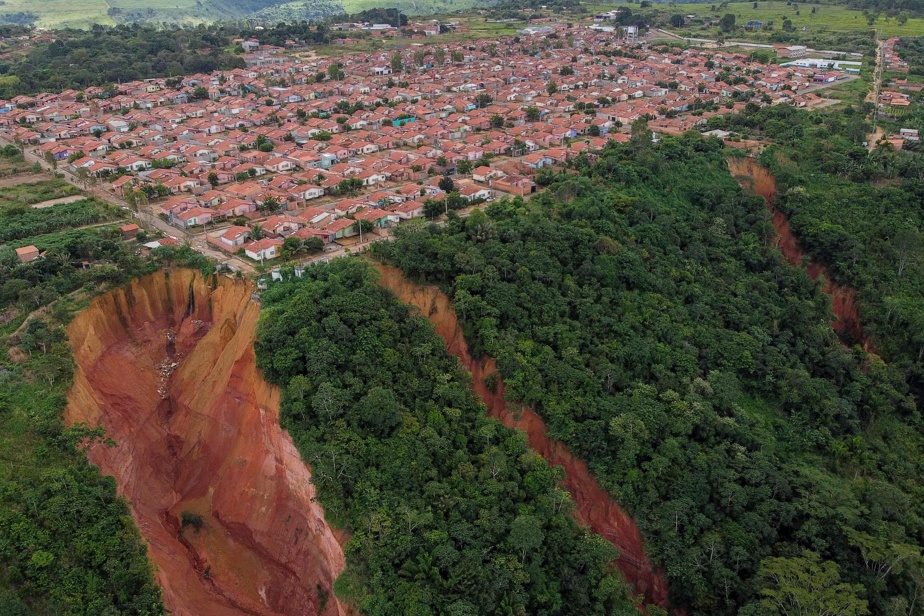(Buriticupu) A few meters from a precipice, Deusimar Batista is drying his clothes in the sun. Around his garden, in a town in the Brazilian Amazon, nothing remains: the house next door has been swallowed up in a huge crater below and its street is unrecognizable.
“Before, it was good to live here, cars and bicycles passed in front of my house. Now all you have to do is see the damage,” the 54-year-old woman told AFP, pointing to the rubble piled up at the bottom of the crater with slopes covered with thick vegetation.
Buriticupu, a town of 70,000 people in the impoverished state of Maranhao, could be wiped off the map in 30 to 40 years, experts say.
The appearance of these giant craters, which can reach 70 meters deep, is a rare phenomenon due to exceptional erosion, the extent of which is linked in particular to uncontrolled urbanization and the increase in deforestation in recent years.
There are 26 in Buriticupu, known as “voçorocas”, a term meaning “torn earth” in the indigenous Tupi-Guarani language.
Seen from the sky, they look like canyons that gradually cut into the city. Erosion begins with simple cracks in the ground, which deepen over time.
The town hall decreed a state of “public calamity” on April 26, and hopes to obtain funds from Maranhao and the federal government to begin containment work soon.
Since the formation of the first crater, about twenty years ago, seven people have died by falling into precipices and about fifty houses have been swallowed up. About 300 others are threatened, according to the town hall of this town which has experienced strong urban expansion from the 1970s.
Each time it rains, the craters widen a little more, enough to make Deusimar Batista shudder at the slightest downpour.
“I don’t sleep at night when it rains because my house could be swept away at any moment,” says the sunken black woman who makes crochet crafts.
“I’m afraid I’ll die if I fall asleep,” she says.
Soil erosion is having far more devastating effects than elsewhere in Buritucupu, due to “unplanned urban expansion, with a faulty water sanitation system,” says Federal University geographer Augusto Carvalho Campos. of Maranhao and author of a study on the voçorocas.
Another aggravating factor: rampant deforestation due to logging in recent decades has drastically reduced the water retention capacity of this sandy soil.
“We would have to do containment work, but also replant trees on the edge of the craters,” said the geographer.
Since most homes are without mains drainage, sewage often flows into craters, which only worsens erosion.
“The leaders did nothing to deal with this problem and that’s what happened,” said Isaias Neres, president of the association of inhabitants of the areas affected by the voçorocas.
Mayor Joao Carlos Teixeira assures that “drainage and soil consolidation works” will soon begin.
Not enough to reassure Maria dos Santos, 45, who lives very close to one of the largest craters in the city, more than 60 meters deep, in the Vila Isaias district, one of the most affected.
“This crater appeared three years ago. It’s scary to live here, but I have no choice, I can’t afford to buy a house anywhere else,” says this mixed-race woman with graying black hair.
His modest home with terracotta walls barely supported by wooden planks is a few meters from the precipice.
In front of the crater, not the slightest barrier or road sign in this neighborhood where children often go out to play in the street.
With each storm, there is anguish. “You don’t know when chunks of land are falling, because it sounds like thunder. We just have to hope that God will take care of us,” she concludes.





















